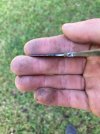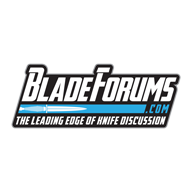I am finding it difficult thinning my chef knifes edge down to the final thickness before sharpening. I’m also struggling with getting the edge thickness even over the whole blade length. How thin should I thin my edges before sharpening? I’m using mostly 5160 (I know not the best) and I am just starting out with 52100.
I find that when I use a lansky sharping system the bevel looks a little wavy. I’m pretty sure that that’s because the edge isn’t the same thickness.
Thanks
I find that when I use a lansky sharping system the bevel looks a little wavy. I’m pretty sure that that’s because the edge isn’t the same thickness.
Thanks


